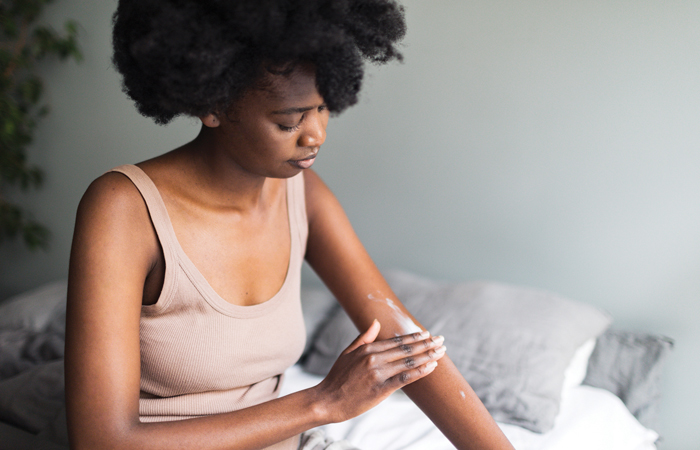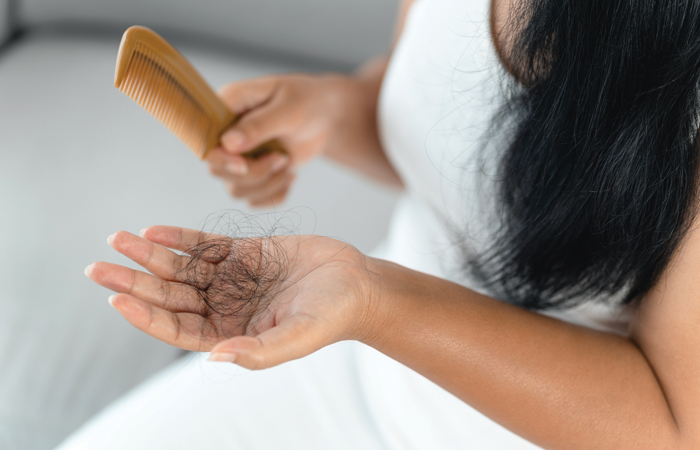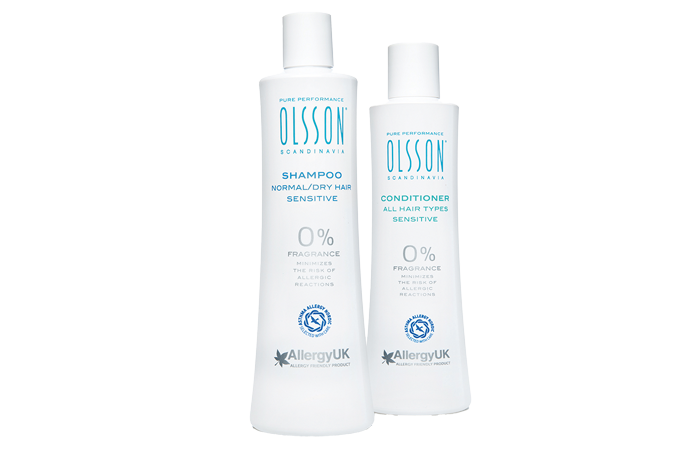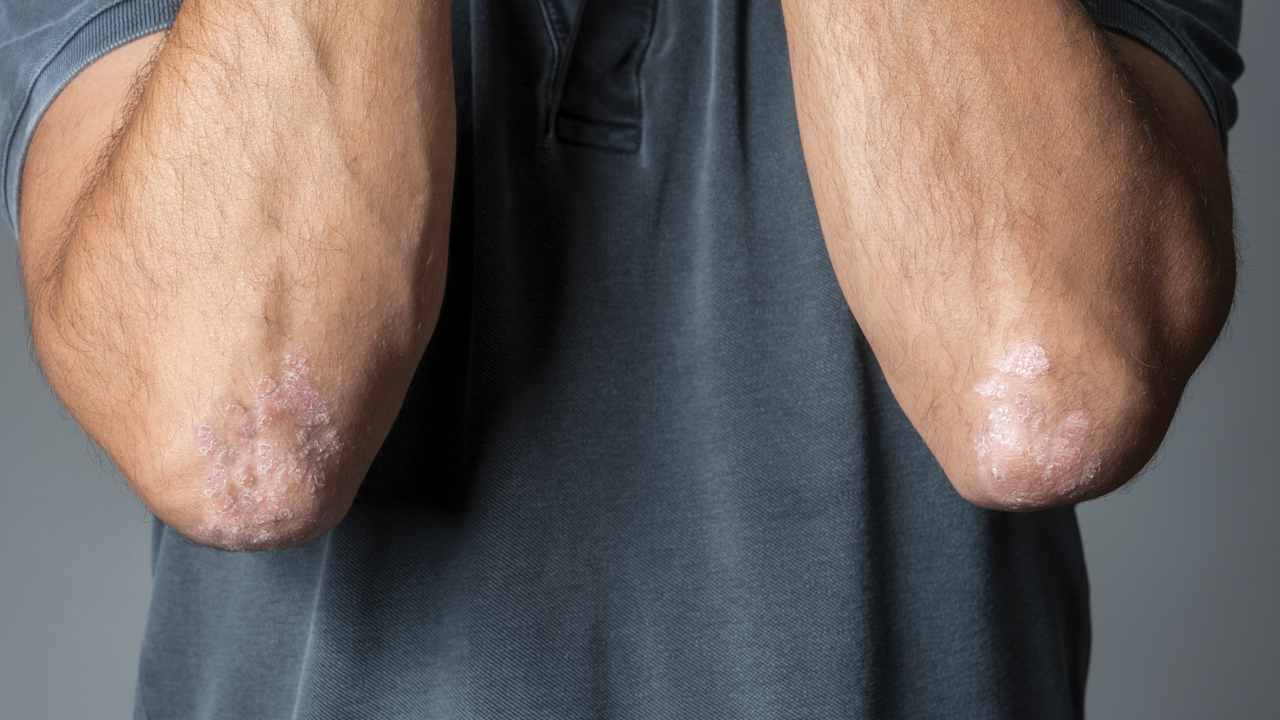In OTC
Follow this topic
Bookmark
Record learning outcomes
You are likely to encounter someone with psoriasis in the pharmacy on a weekly, if not daily, basis. Studies suggest up to one in 35 people in the UK live with psoriasis, but many people with mild psoriasis do not seek help from a healthcare professional.
Psoriasis doesn’t just come out in a rash. “Psoriasis is a chronic inflammatory condition that can affect skin and nails, and be associated with other issues,” says Dr Tess McPherson, consultation dermatologist from the British Association of Dermatologists (BAD). People with psoriasis are particularly prone to, among other conditions, arthritis, heart attacks, strokes, asthma and inflammatory bowel disease (IBD). Meanwhile, psoriasis, especially on the face, palms, soles or genitals, can ruin patients’ wellbeing and even drive some people to suicidal thoughts or actions.
While dermatologists have an unprecedented understanding of psoriasis causes and an ever-expanding range of treatments, it remains incurable. So, how can the pharmacy team help?
“It cannot be overstated that a genetic tendency is the main reason for psoriasis”
Is a rash psoriasis?
First, make sure the rash really is psoriasis. “Psoriasis can look similar to other inflammatory skin conditions, such as types of eczema, a fungal infection or lichen planus,” Dr McPherson says. Indeed, psoriasis may resemble diseases as diverse as atopic dermatitis (allergic eczema), seborrhoeic dermatitis, fungal skin infections (tinea; ringworm), some cancers and secondary syphilis. Certain clinical clues help. Lichen planus, for instance, causes shiny, raised, purple-red blotches on the limbs or body, and white patches in the mouth or hair loss.
The various forms of psoriasis complicate diagnosis. Chronic plaque psoriasis, also called psoriasis vulgaris (vulgaris is Latin for common), is the most frequent type. Uncommon forms include guttate, erythrodermic and pustular psoriasis. “Psoriasis can generally be recognised by the appearance of the rash and the areas of skin affected. Plaque psoriasis typically affects elbows, knees, scalp, armpits, breasts, tummy, belly button and genitals. Although psoriasis mostly causes localised skin inflammation, it can be very widespread,” Dr McPherson explains.
“The skin plaques classically appear as raised, red areas with clear borders [well-demarcated] and significant scales, which can appear ‘silvery’,” Dr McPherson adds. In skin of colour, the plaques appear grey, purple or lilac. “When psoriasis improves it tends to leave pale areas on skin,” she remarks.
In about half of people with plaque psoriasis, the disease impacts the nails, which may separate from the fingers or toes (which can be difficult to see in skin of colour), show orange-yellow discolouration (oil spots) or crumble. Sometimes, distinguishing fungal nail infections (onychomycosis) from psoriasis can be tricky. Patients should see their GP if there is any doubt about the diagnosis or the psoriasis seems to be worsening.
Under psoriatic skin
Psoriasis arises from the interaction of genes and environment. Scientists identified about 80 genes that influence the risk of developing psoriasis. Without an environmental trigger, psoriasis does not develop. Stress, infections (especially streptococcal), alcohol, smoking, certain medicines (including lithium, antimalarials and non-steroidal inflammatory agents), sunlight, weight gain and obesity can all trigger psoriasis in some genetically predisposed people.
Researchers do not fully understand how genes and environmental triggers interact to cause the self-sustaining inflammation characteristic of psoriasis. However, certain cytokines, small signalling proteins that help control immune responses, drive psoriatic inflammation. Two cytokines, interleukins 17 and 23 (IL-17 and IL-23) are particularly important in psoriasis. Medicines targeting IL-17 and IL-23, and another cytokine called tumour necrosis factor alpha, transformed management of severe and chronic plaque psoriasis.
Psoriatic inflammation can affect parts of the body other than the skin and nails. For example, between 10-40 per cent of psoriasis patients develop arthritis, usually in their finger joints. A person with psoriasis and unexplained joint pain or swelling should see a doctor as soon as possible. “If the patient presents evidence of joint inflammation, they will need a referral to secondary care, as the joint disease can be destructive, and treatments should be considered early on,” Dr McPherson says.
Psoriasis, especially plaques on the face, palms, soles or genitals, can dramatically undermine wellbeing. Not surprisingly, people with psoriasis are more likely than the rest of the population to be depressed. Inflammation, which contributes to many conditions associated with psoriasis, also increases the risk of depression. “The impact of psoriasis varies between people and, to some extent, depends on how severe and widespread it is,” Dr McPherson says.
“As with many chronic skin conditions, psoriasis can have a huge impact on many people’s self-esteem, mental health, quality of life and intimate relations. The impact can be cumulative and life-long in some people. They may avoid activities, increasingly restricting their lives. It is vitally important that patients struggling with psoriasis understand that they have done nothing wrong, which is key for their ability to live full lives and get the right treatments and support to reduce the impact of psoriasis.”

“There is a link between psoriasis and obesity”
Treating psoriasis
Topical (applied to the skin) formulations are the foundation of psoriasis management, even in people using other treatments. The most appropriate formulation depends on the extent and type of psoriasis. For example, people with large areas of psoriasis may benefit from creams, lotions or gels. Ointments are best for thick scale. Lotions, solutions or gels are suitable for the scalp and other hairy areas.
Advise people with psoriasis that topical treatments may take several weeks to start working. Patients also need to appreciate that the psoriasis may relapse if they suddenly stop using topical treatments. “If patients do not see an improvement after one to two months, or if the skin condition is getting worse, then we would suggest getting further support and advice on other treatment options – this may have to be via their GP,” Dr McPherson suggests.
“Although there is no cure for the tendency for psoriasis, there are multiple treatment options for psoriasis, including over-the-counter (OTC) moisturisers [emollients] to help with dryness on their skin. Mild-to-moderate topical steroids can be helpful for facial psoriasis and are available OTC. For more severe or persistent cases, a GP can prescribe treatments for psoriasis that are not available OTC or refer to a dermatologist,” says Dr McPherson.
Topical treatments alone may not control psoriasis, especially if more than 10 per cent of body surface area is affected. In adults, the front and back of one arm and hand, the chest and the stomach each equal about nine per cent of the body’s surface area. GPs may prescribe a more potent steroid than those available OTC, a drug related to vitamin D (e.g. calcipotriol) or both. You should stress the importance of using the medications as advised and ensure patients know how to apply treatment. Adherence can be particularly poor with topical treatments.
Dermatologists can offer other treatments such as: phototherapy with ultraviolet light; injected or oral drugs that suppress the immune system or reduce inflammation (e.g. ciclosporin, methotrexate, acitretin and apremilast); or ‘biologics’ targeting the cytokines that drive psoriasis (e.g. etanercept, secukinumab and ustekinumab). So, patients should see their GP if the psoriasis does not improve sufficiently.
Lifestyle changes
“It cannot be overstated that a genetic tendency is the main reason for psoriasis. The person has not ‘done anything wrong’ to get psoriasis,” Dr McPherson says. “With this in mind, lifestyle advice for people with psoriasis should be supportive and non-judgemental. There is, however, a link between psoriasis and obesity and heart issues, particularly in older patients. Lifestyle advice about keeping a healthy weight, eating a balanced diet, limiting alcohol intake and taking regular exercise are even more important in people who have psoriasis. In some people, this can reduce how bad their psoriasis is, how much it impacts them, as well as how they respond to treatments and long-term risks.”
People with psoriasis may benefit from other lifestyle changes including smoking cessation, improved sleep and reducing salt. The Journal of the European Academy of Dermatology and Venereology recently reported that each extra gram of sodium intake – equivalent to about 2.5g of table salt (sodium chloride) – increases psoriasis risk by 18 per cent to 47 per cent. Sodium deposited in the skin may trigger psoriatic inflammation. Reducing salt also lowers the likelihood of hypertension and stroke, which, as we’ve seen, are particularly common in people with psoriasis.
As these examples show, our understanding and treatment of psoriasis is continually evolving and pharmacy teams can play a crucial role. “Keeping informed and your knowledge up to date is important,” Dr McPherson concludes.
Head to head
There are a number of skin conditions that can affect the scalp.
Hair loss
Finasteride, used to shrink enlarged prostates, is available on private prescription for male-pattern hair loss (androgenetic alopecia). Finasteride is not generally suitable for women.
Topical minoxidil formulations, which are applied to the scalp and increase blood flow to the hair root, are available OTC for male- and female-pattern hair loss. Any initial increased hair shedding usually settles during the first six weeks. Researchers originally developed minoxidil to lower blood pressure. So, speak to the pharmacist if the person takes antihypertensives. The benefits of finasteride and minoxidil last as long as the person persists with treatment. Before suggesting minoxidil, ask about other causes of hair loss, such as illness, stress, some medicines (especially some of those for cancer), weight loss and iron deficiency. People with other possible causes of hair loss should see a doctor.
Dandruff and seborrheic dermatitis
Half of adults have seborrheic dermatitis (SD), which ranges from mild dandruff to severe red scaly rashes across much of the body. Dandruff produces fine, white or grey scales of skin with little, if any, inflammation. The scalp may be dry and itchy. In SD, the scalp is more extensively affected along with the face and trunk. The scales and erythema (red skin) are more prominent. These people should see their GP.
Patients can use gentle soap-free wash on areas affected by SD. After washing, a light moisturiser can help their skin barrier. You could also suggest an OTC emollient rather than soap or shaving cream.
For dandruff, suggest a shampoo containing one of the following: zinc pyrithione; selenium sulphide (sometimes spelt selenium sulfide); ketoconazole; or coal tar with salicylic acid. Advise customers to use the shampoo for a month to see if the dandruff improves. Some patients try more than one before finding a shampoo that works and remind people that stress and cold weather may make dandruff worse. People should see their GP if the dandruff does not respond to shampoos, the scalp is red and swollen, or the dandruff is severe and very itchy.

Scalp psoriasis
“Scalp scale can be seen in a number of skin conditions, many of which can overlap,” says Dr Tess McPherson, consultation dermatologist from the British Association of Dermatologists (BAD). “Eczema, seborrheic dermatitis, sebo-psoriasis [patients have features of SD and psoriasis] and psoriasis can all cause scalp scale or ‘dandruff’.”
But how can you tell the difference? “Classic psoriasis tends to affect the margins [edges] of the scalp and you may see clearly demarcated areas of skin inflammation as well as thick scale. Psoriasis commonly affects the areas behind the ears and in the ears. Another way to differentiate between psoriasis or other scaly scalp conditions is to keep an eye out for any rash elsewhere or for changes to the nails,” Dr McPherson suggests.
In addition to the other OTC options for psoriasis, shampoos or leave-on products containing tar can reduce scalp scale. As medicated shampoos treat scalp psoriasis, the person will still need to use a regular shampoo and conditioner. Advise patients to massage the shampoo into their scalp and then leave it on for five to 10 minutes before rinsing out. Some other coal tar products are left for one to two hours. Make sure people know how to use the product and suggest that they wear a shower cap, as coal tar can stain skin, hair, clothes, bedding and jewellery.
Emollient ointments, and olive or coconut oil can soften thick, adherent scale. This means that steroid, tar and other treatments penetrate the skin, and so work better. The Psoriasis and Psoriatic Arthritis Alliance publishes an excellent patient leaflet about scalp psoriasis.

Olsson Scandinavia Shampoo and Conditioner are fragrant-free and carefully formulated to minimise irritants and support scalp health, says Olsson Scandinavia. Both are approved by Allergy UK and Asthma Allergy Nordic and are appropriate for use for sensitive scalps, adds the company. Olsson Scandinavia Shampoo and Conditioner can be recommended for the management of conditions like psoriasis, seborrheic dermatitis, eczema and general scalp sensitivity, says the company.
Olsson Scandinavia: olssonhaircare.com/pharmacy / info@olssonhaircare.com

